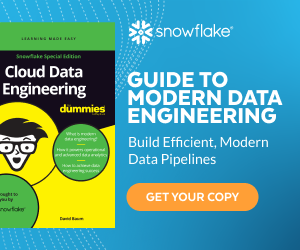SQL Versus NoSQL: What’s the Difference?
Organizations have a wealth of choices when it comes to databases today. But while there are many options, all of them can be divided into two distinct categories: SQL and NoSQL. Too often, the conversation around databases has focused on choosing one option over the other. In reality, businesses can save time, resources, and costs by using a modern SQL-based data platform that harmonizes structured and semi-structured data streams. So let’s explore the differences and consider a simple solution to the SQL versus NoSQL debate.
Differences Between SQL and NoSQL Databases
There are several differences between traditional SQL and NoSQL databases. Here are a few key differences you should be aware of.
Data storage model: SQL databases store data in tables with fixed rows and columns. NoSQL databases are categorized into four distinct types, each utilizing a different data storage model and offering a diverse set of options for data management. Document databases use documents, key-value databases use key-value pairs, wide-column databases use tables with rows and dynamic columns, and graph databases use nodes and edges.
Scaling: With SQL, scaling can be vertical (scale up) or, in the cloud, horizontal (scale across). With NoSQL, scaling is horizontal.
Multirecord ACID transactions: SQL databases support multirecord ACID database transactions, whereas most NoSQL databases do not.
NoSQL is primarily used in transactional databases for OLTP (online transaction processing).
Benefits of SQL Databases
A SQL database uses a relational model. While SQL is not the only language used in relational databases, it’s the most common. SQL databases offer significant benefits, including:
Smaller data storage requirements: SQL supports optimization strategies such as normalization, which boosts database performance and reduces data storage requirements.
Flexible querying: SQL databases enable diverse workloads, optimizing queries to fit on-disk representations.
Established data integrity semantics: As mentioned, SQL databases support ACID properties. This means you can be confident in the integrity of your data.
Drawbacks of NoSQL Databases
In the 2000s, NoSQL databases such as MongoDB and CouchDB gained prominence with the rise of cloud technology and the surge in mobile and IoT-generated big data. While they offered some advantages to the available technology at the time, we now have more options due to advances in technology, and NoSQL databases have several drawbacks, including:
Problems associated with distributed systems: Because NoSQL makes use of distributed systems, these databases can encounter problems associated with distributed systems. It’s best to have an expert on hand to address these issues as they arise.
Typically no support for ACID transactions: Most NoSQL databases don’t support ACID transactions across multiple documents.
The SQL Versus NoSQL Debate
In the modern world, much valuable data is unstructured and semi-structured, and teams need the ability to gather insights from it. Additionally, business intelligence requires agility, so insights must be identified quickly. In the past, companies had to choose one database option and transform all data to match one set of database schemas and specifications, but today businesses have more flexibility.
Platforms such as the Snowflake platform enable organizations to optimize time, resources, and cost while harmonizing structured, semi-structured, and unstructured data streams (now in preview). Snowflake includes native support for unstructured data formats (such as images, video, audio, and PDF files), semi-structured data formats (such as JSON, Avro, ORC, and XML), and relational data.
With Snowflake, users can:
Load semi-structured data without the need for transformation in advance
Decide whether to flatten semi-structured, nested data formats into SQL relational tables or store them in native format
Deploy fast and efficient SQL-based querying across all data types, which are automatically converted to the optimized internal storage format
With the Snowflake Data Cloud, you don’t have to choose between database types. Instead, you can make use of all available data for business intelligence and easily develop applications in a highly scalable and fully elastic platform.
To test drive Snowflake, sign up for a free trial.
